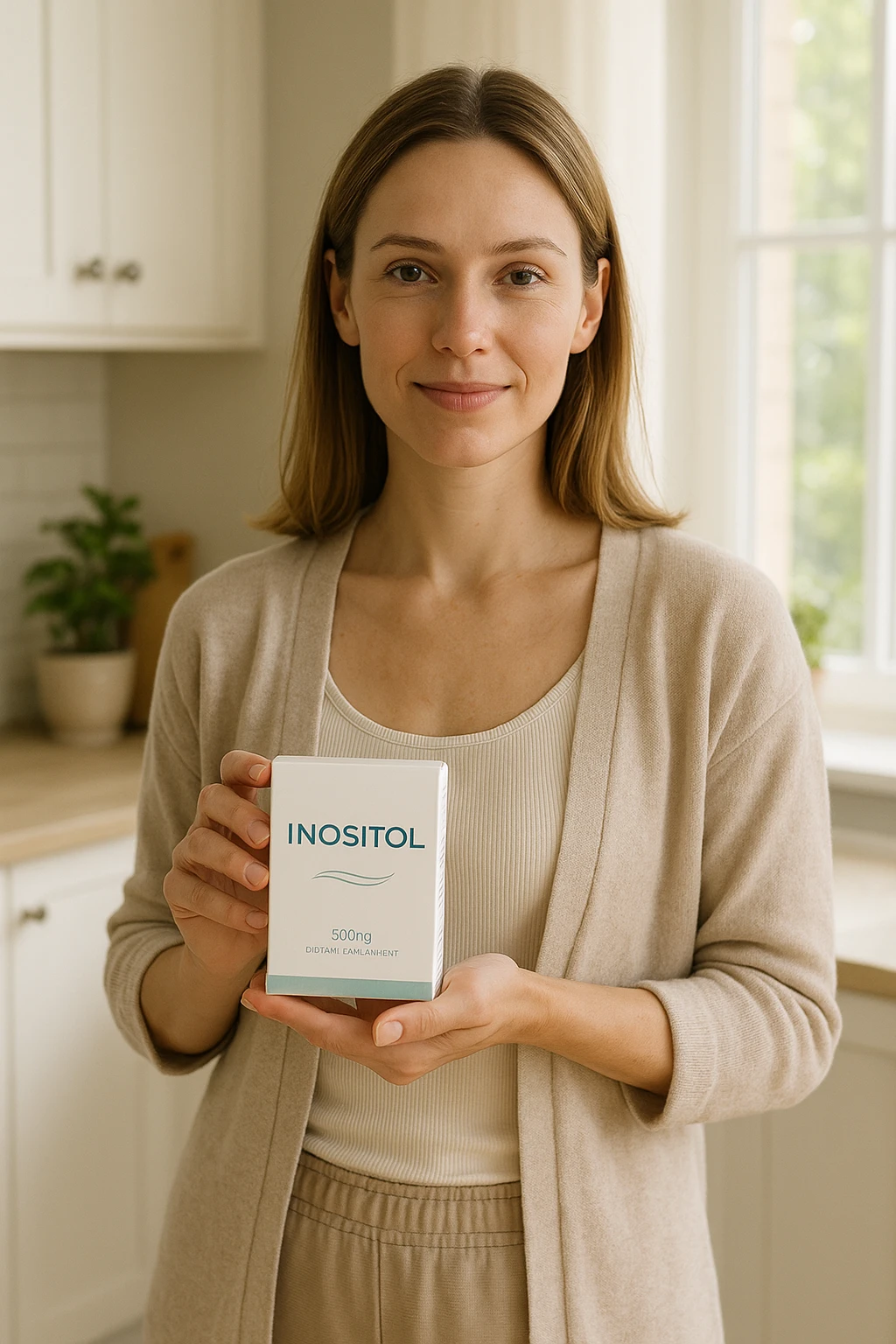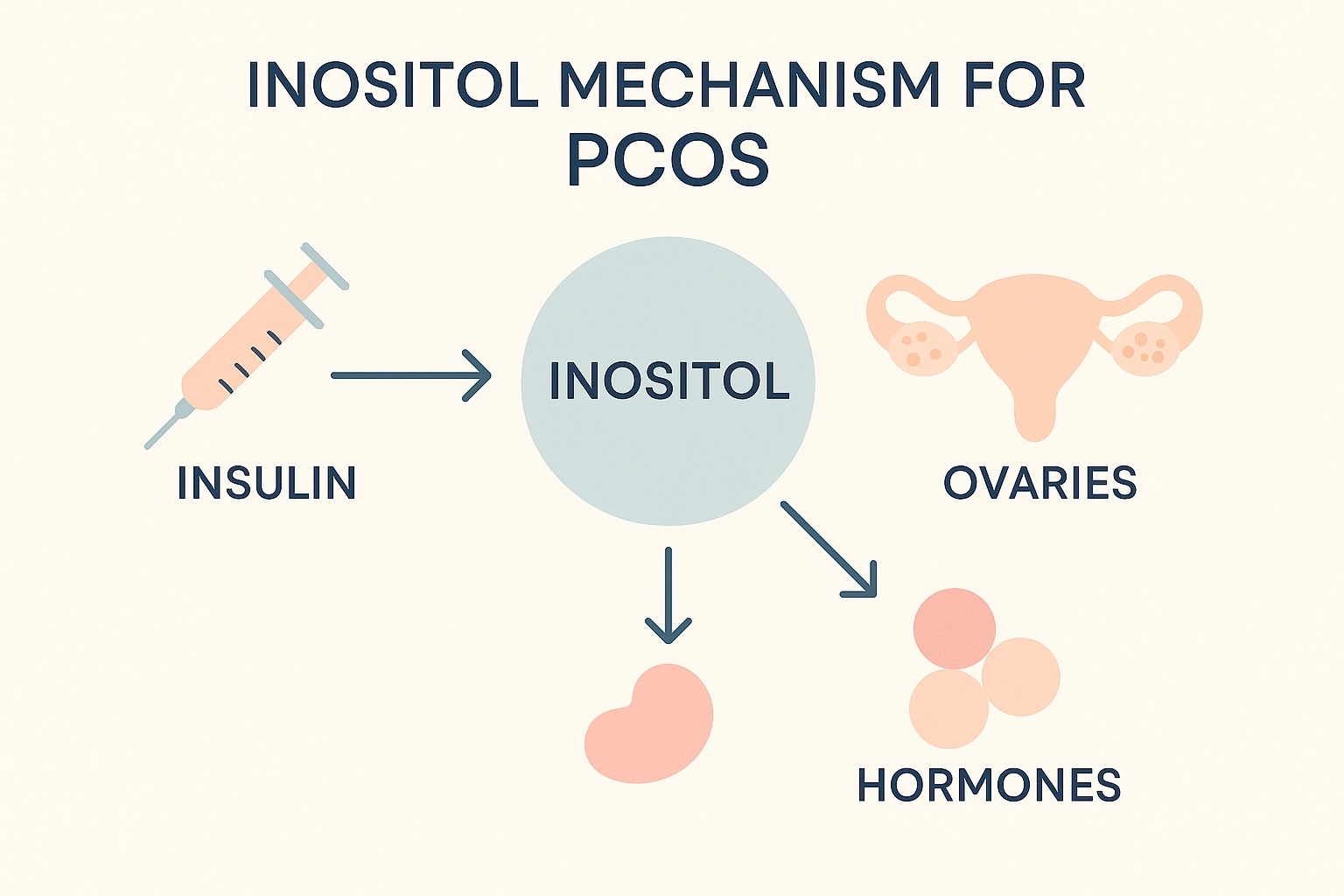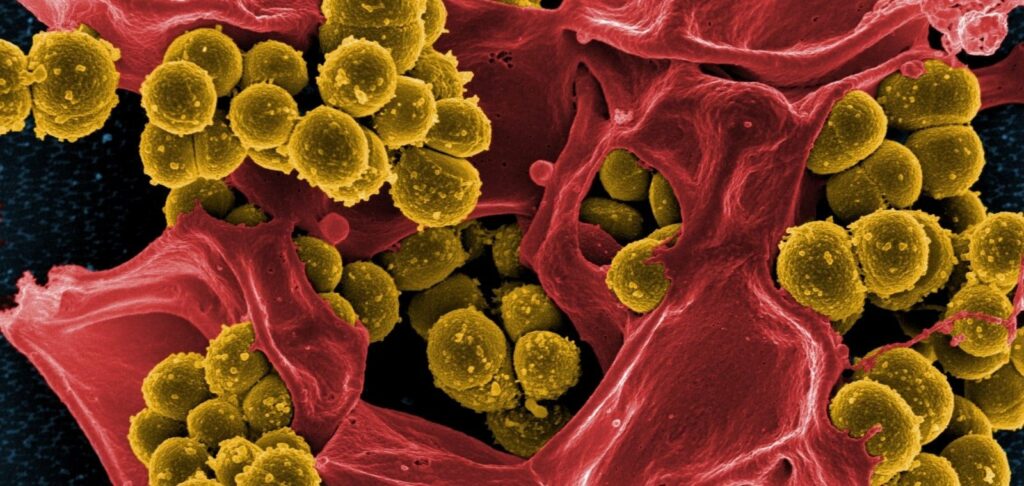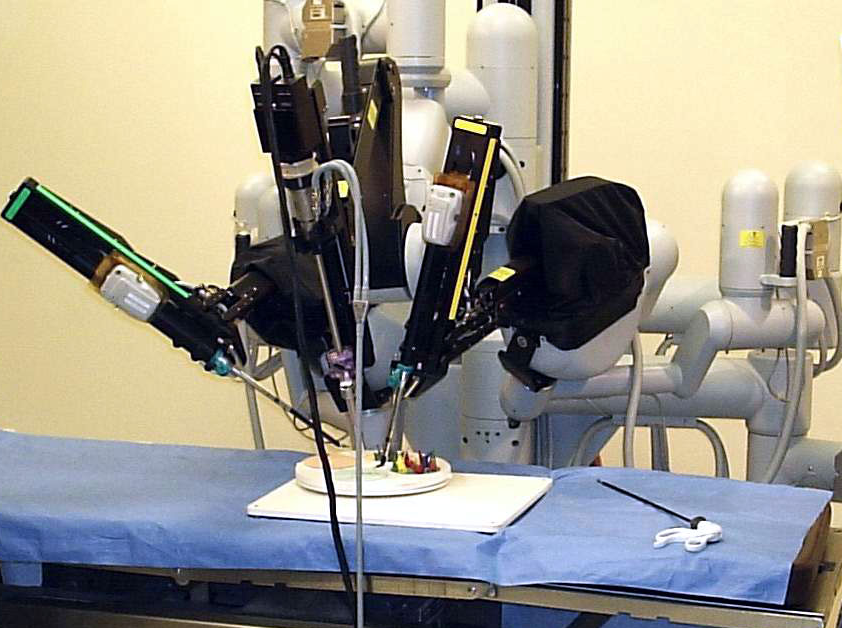

Introduction: when a cycle is not just about menstruation
Polycystic ovary syndrome (PCOS) is one of the most common endocrine disorders in women of reproductive age.
It can manifest as acne, menstrual irregularities, excessive hair growth (hirsutism), weight problems and infertility.
Modern nutraceuticals are increasingly focusing on the role of inositol as one of the key tools for maintaining hormone balance.
At Vitafoods Europe 2025, inositol was mentioned in connection with new clinical approaches to fertility, metabolic syndrome and even emotional well-being. But how exactly it works – let’s explore further.

What is inositol?
Inositol is a pseudovitamin that is structurally similar to glucose. There are several isomers of inositol, of which the best known are myo-inositol and D-chiro-inositol.
Both are naturally present in the cells of the human body and have important roles in insulin signaling as well as ovarian function.
🟢 Myo-inositol supports insulin sensitivity and egg quality.
🟠 D-chiro-inositol has more of an effect on androgen synthesis.
The key is the balance between the two, the most commonly used ratio is 40:1 (myo to D-chiro).
Inositol in CKD: mechanisms of action
The main mechanisms through which inositol affects the symptoms of SPCN:
-
Improving insulin sensitivity ✅ Improving insulin sensitivity ✅ Improving insulin sensitivity
-
Reduction of androgen levels ✅ Reduction of androgen levels
-
Restoration of the ovulatory cycle ✅ Restoration of the ovulatory cycle
-
Improvement of oocyte quality ✅ Improvement of oocyte quality ✅ Improvement of oocyte quality
-
Improvement of psycho-emotional state ✅ Improvement of psycho-emotional state ✅ Improvement of psycho-emotional state
Table 1: Effects of inositol in PCOS
| Effect | Research / Source |
|---|---|
| Decreased testosterone | Gerli et al., Eur Rev Med Pharmacol Sci, 2007 |
| Improved ovulation | Nestler et al., Fertil Steril, 2008 |
| Insulin regulation | Genazzani et al., Gynecol Endocrinol, 2008 |
| Increased fertility | Raffone et al., Gynecol Endocrinol, 2010 |

The evidence base: what does the research say?
In numerous clinical studies, inositol has demonstrated efficacy in:
-
reducing insulin resistance (especially in overweight women),
-
reduction of hirsutism and acne,
-
increasing the chances of pregnancy in women with CKD.
For example, a review by Facchinetti et al, Int J Endocrinol, 2016 indicates that regular supplementation with myo-inositol (2-4 g/day) for 3-6 months significantly improves fertility.
Inositol and fertility: not just for PCOS
Inositol may also be useful in cases of unexplained infertility, in preparation for IVF (in vitro fertilization) and to improve egg quality in women after age 35.
Table 2. Role of inositol in fertility (without PCOS)
| Situation | Effect of inositol | Source |
|---|---|---|
| ECHO | Improving oocyte quality | Papaleo et al., Gynecol Endocrinol, 2009 |
| Infertility of unknown etiology | Restoring ovulation, reducing stress | Regidor et al., Reprod Biol Endocrinol, 2018 |
| Women after 35 | Improving ovarian function | Chiu et al., Reprod Sci, 2020 |

New delivery systems for inositol (Vitafoods 2025)
At Vitafoods Europe 2025, manufacturers presented innovative forms of inositol delivery:
-
chewable tablets with a pleasant flavor (targeting young women);
-
liposomal formulas with B vitamins for improved absorption;
-
combinations of inositol with NAC, folic acid and melatonin to improve sleep and metabolism.
These approaches open the way to more personalized support strategies for women with SPCN and beyond.
Conclusions and recommendations
-
Inositol is a safe and effective nutraceutical strategy for SPCN.
-
The optimal ratio of myo- to D-chiro-inositol (40:1) demonstrates the best clinical results.
-
Inositol has the potential to support female fertility even in the absence of a diagnosis of PCOS.
-
It is important to choose formulas with an evidence base and a convenient dosage form.
List of references
-
Gerli S, et al. Eur Rev Med Pharmacol Sci. 2007.
-
Nestler JE, et al. Fertil Steril. 2008.
-
Genazzani AD, et al. Gynecol Endocrinol. 2008.
-
Facchinetti F, et al. Int J Endocrinol. 2016.
-
Papaleo E, et al. Gynecol Endocrinol. 2009.
-
Raffone E, et al. Gynecol Endocrinol. 2010.
-
Regidor PA, et al. Reprod Biol Endocrinol. 2018.
-
Chiu TT, et al. Reprod Sci. 2020.



